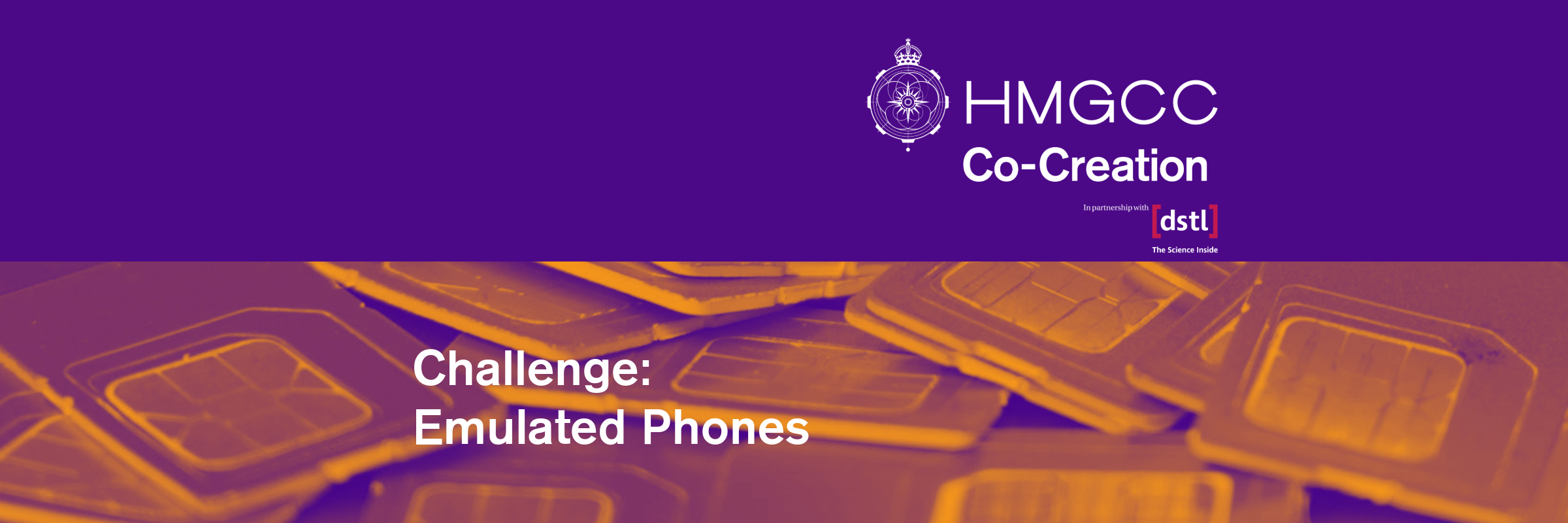
Emulated phone technology is being sought by the National Crime Agency (NCA) to support its work using multiple aliases to communicate with numerous people nationally and internationally.
In its latest challenge, HMGCC Co-Creation wants to hear from organisations which have an emulated phone solution to potentially help the NCA in its future work.
The solutions being put forward by organisations applying for this challenge should already be at mid to high Technical Readiness Level (TRL).
Organisations are being asked to apply if, over a 12-week period, they can develop and demonstrate a piece of technology to meet this challenge. HMGCC Co-Creation will provide funding for time, materials, overheads, and other indirect expenses.
The challenge
Context
This HMGCC Co-Creation challenge, launched on behalf of the NCA, is looking for an emulated phone solution.
The NCA’s mission is to protect the public from serious and organised crime. It operates across the UK and around the world. This requires NCA officers to be able to communicate securely, effectively and dynamically with officers and a range of partners 24/7, 365 days a year. Communications include voice, text, video and picture messaging.
Officers may use multiple aliases and several physical mobile phones to interact with numerous people, protecting their identity and the identity of those with whom they communicate. The NCA wants to reduce the use of physical handsets, in favour of simplifying operations by using a single approved device. The single device should be able to host a series of emulations that can be spun-up and decommissioned rapidly. Due to the sensitivity of some operations, there must be minimal risk of emulation being linked, and any risks should be identified and clearly articulated for the risk owner.
The gap
When applying for this challenge, please consider the following questions and how a solution relates to them:
- Could an officer use your solution to run multiple different aliases, with minimal contagion risk?
- Can the solution be used within a secure government facility where mobile phones may be prohibited?
- What are the running costs and maintenance overheads?
- Does this simplify the users’ experience compared to using multiple non-
traceable phones? - Would its use look normal for a plain-clothed officer, for example during transit
through an airport? - Is there a risk of exposing identities within the phonebook?
Example use case
Leo is an operational officer deployed overseas to investigate serious and organised criminals targeting UK victims.
Leo carries with him multiple non-traceable UK issued phones so he can communicate with different suspected criminals as well as law enforcement colleagues, using distinct and separate aliases.
Leo travels successfully through the airport but is aware that carrying multiple phones may look suspicious. Whilst abroad, Leo is on call 24/7 and has the overhead cost of maintaining each phone, as well as the responsibility of ensuring he is using the right phone to contact the right person, using the correct alias.
The whole process needs to be streamlined, less subject to risk and benefit from cost savings by reducing the number of phones for each operation.
Leo gives his requirements to Jenny, a technical solutions architect. Jenny identifies a work issued device as a solution which can message physical phones owned by suspected criminals or law enforcement colleagues with minimal risk of digital contagion across each interaction. This would allow Leo to use multiple aliases with reduced maintenance cost and less potential for error. Jenny’s solution is age and repeatable and can direct calls to officers 24/7, so Leo can use the same device.
Project scope
Applications should already have partially developed emulation capability. The output of the 12-week project should be a demonstration of running mainstream apps through emulation, achieving at least TRL5.
Applicants should consider the below list of requirements for consideration in the final solution:
Constraints:
- Current focus on Android software only
- Must be able to use mainstream and bespoke apps
- Persistent account and data within apps
- Solutions must consider encryption
Desirable features:
- Use of the cloud
- Visual and audio input can be fed into the device
- Could consider using Mobile Virtual Number Operator (MVNO)
- Agility of alias generation so they can be commissioned and decommissioned
rapidly - Keystrokes and interaction may be used for evidential purposes in the future
- Alias generation must exhibit a realistic pattern of life, geolocation, SIM card
properties etc.
Stretch targets:
- Alert system for the user to check messages on the emulator
Solutions should not include the following:
- Remote control or the need to purchase multiple mobile phones
- Horizon scanning
Key dates
10 October
Competition opens.
22 October
Deadline for clarifying questions.
29 October
Clarifying questions published.
07 November
Competition closes.
18 November
Applicants notified.
26 November
Pitch day.
6 January 2025
Target project kick off.
Eligibility
This challenge is open to sole innovators, industry, academic and research organisations of all types and sizes. There is no requirement for security clearances.
Solution providers or direct collaboration from countries listed by the UK government under trade sanctions and/or arms embargoes, are not eligible for HMGCC Co-Creation challenges.
DOCUMENTS AND LINKS
For further information including routes to apply, HMGCC Co-Creation terms and conditions and FAQs.
